
Topics
Guests
- Chris Painedirector of the documentary Who Killed the Electric Car?
- Chelsea Sextonformer General Motors employee who worked on the EV-1 electric car. She is now the executive director of Plug In America.
General Motors has been at the center of one of the nation’s largest controversies over clean-emissions cars. In 1996 the company introduced the EV-1 electric car in California and Arizona. Hundreds of the electric cars were soon on the road. Then they all disappeared. The mystery behind their disappearance is the subject of the documentary “Who Killed the Electric Car?” We’re joined by the film’s director, Chris Paine, and Chelsea Sexton, a former GM employee who worked on the EV-1 electric car. [includes rush transcript]
Transcript
JUAN GONZALEZ: In the San Francisco Bay Area, environmentalists are planning to hold a clean car rally on Saturday as part of the Step It Up day of action. The rally will feature plug-in hybrid cars, biodiesel conversion, solar buses and electric cars. A clean car caravan is scheduled to travel to the General Motors dealership in Marin. Activists plan to call on GM to plug in hybrids, not Hummers. It won’t be the first time protests have occurred outside a GM dealership in California. General Motors has been at the center of one of the nation’s largest controversies over clean-emission cars.
AMY GOODMAN: In 1996, the company introduced the EV-1 electric car in California and Arizona. Hundreds of the electric cars were soon on the road. Then they all disappeared. The mystery behind their disappearance is the subject of the documentary Who Killed the Electric Car? In a moment, the film’s director, Chris Paine, and a former General Motors employee, now whistleblower, Chelsea Sexton, will join us. But first let’s play an excerpt of the film.
CHELSEA SEXTON: The car was so fast, it looked like it would outrun its own shadow.
TEST DRIVER: Oh, it was an awesome car to drive.
GREG HANSSEN: It was the crest of a wave that we thought was coming in. It was the new thing that was going to change the way everybody travels.
NARRATOR: Other car companies began to comply, often with conversions of gas cars, but with many of the same advantages of the EV-1.
ALEXANDRA PAUL: I’m not mechanical at all, and I love dealing with my electric car, because it’s so easy. I plug it in at night, and when I need to drive it, I unplug and drive it away.
J. KAREN THOMAS: They’re for people who love the environment.
COLETTE DIVINE: I say they’re just for people who love cars. They’re for people who have to go somewhere.
TOM HANKS: Well, this is amazing. What you do is, with this electric car, Dave, you put the key in, and you turn it. And then there’s this thing on the floor called the pedal. A pedal.
WALLY E. RIPPEL: The exciting thing about this is that the cost of operating the car is the same as if you were driving a typical gasoline car, but the gasoline only costs 60 cents a gallon.
CHELSEA SEXTON: Going to the gas station is a hassle, believe it or not. Plugging a car in is not.
TOM HANKS: The battery that you charge at home, it gets about between 70 and 80 miles per charge, which for me is more than all the driving that I need to do in the course of a day.
GREG HANSSEN: People started seeing the cars on the road and getting a better understanding of what they could do. Friends and neighbors and relatives started saying, “Hey, that’s a neat idea, you know? I should get one of those.” And we started seeing the momentum building for this and the waiting lists being created for these cars.
J. KAREN THOMAS: Cut two.
COLETTE DIVINE: Cut two. I go online to look for other Toyota RAV4s, and I see Toyota RAV4 EV. And I said, “What’s that?” Click. Wow! My whole world opened up. This is an electric vehicle. It goes, you know, a hundred miles to a charge, blah, blah, blah, blah. It’s just like—I didn’t know this existed. I didn’t know this was a possibility. How come I don’t know about this? Well, have you seen this on TV?
DOUG KORTHOF: When I first tried to buy the Honda EV-Plus, I drove in it, and I said, “Hey, this is a great car!” I said, “I’ll take it.” The person that was trying to sell it to us was dumbfounded. He didn’t know what to do. He had never leased one before, didn’t know how to do it, and it took me six weeks of negotiations before I was able to get the car from their hands.
PETER HORTON: There’s nothing like driving a car where you realize, as you’re sitting in traffic, there’s no pollution coming out of your tailpipe. You’re just sitting there with batteries on the car.
DAVID LETTERMAN: By driving an electric car, what are you sparing us from?
TOM HANKS: I’m saving America, Dave. That’s what I’m doing. I am saving America by driving electric cars.
AMY GOODMAN: That was Tom Hanks speaking on The David Letterman Show. Despite the praise from drivers, General Motors stopped manufacturing the cars and forced all drivers to return their EV-1s. GM was able to do this because none of the cars had actually been sold, only leased. After the electric cars were removed from the road, they were sent to Arizona, where they were crushed.
CHRIS PAINE: We flew over General Motors, and, looking down, we could see right next to the racetrack where the EV-1 was first tested, we saw, I don’t know, maybe 50 EV-1s, crushed and put on top of semi-flatbeds, right next to the yellow crusher. General Motors is almost finished off, I think. I don’t imagine there’s very many EV-1s left that haven’t been crushed out. It’s pretty sad.
DAVE BARTHMUSS: There are one of four things that will happen with the EV-1s. They’ll go to colleges and universities, engineering schools. They’ll go to museums and other displays across the country. Other EV-1 vehicles are being driven by our engineers. And the other option for EV-1s at the end of their life is recycling. But know that every one—every part of the EV-1 is going to be recycled, dismantled through a third party and then reused. Everything is going to be recycled. We’re not just going to crush it and send it off to a landfill.
JIM BOYD: When I saw the picture of the pile of crushed cars, it hurt. And I—you know, I thought it was pretty spiteful.
IRIS OVSHINSKY: To see on the computer, on the Internet, the crushed EV-1s that GM did—
STANFORD OVSHINSKY: It was wrong.
IRIS OVSHINSKY: Tragic. That was tragic.
STANFORD OVSHINSKY: It was wrong. But more wrong is the reasons for it.
CHELSEA SEXTON: All the sudden we were sort of left at odds. You know, what do we do now? And at the time that most of this was going on, no one had any idea that every automaker was going to jump ship.
NARRATOR: More Internet tips revealed that the EV-1s were not the only electric vehicles in jeopardy. A number of Ford TH!NKs and Ranger electric trucks were discovered in Palm Springs and rumored to be set for destruction. In Los Angeles, activists spotted a truckload of Toyota RAV4 EVs. Fearing the destination was a crushing facility, they chased it. The next morning the truck turned back.
LINDA NICHOLES: That guy was going as fast as he possibly could in a big transport like that, trying to lose us, it was clear, but wasn’t able to do it. And, of course, that did change Toyota’s plans. It was so inconsistent. They didn’t know what the hell to do.
DOUG KORTHOF: Then he goes to the end of the pier, and these two big security guards come out. They opened this locked gate. The truck goes inside, and then the security guards come out and surveil us.
LINDA NICHOLES: Somehow we ended up at this godforsaken place.
DOUG KORTHOF: Which has everything. It has spewing smoke into the harbor that kids have to breathe. It has an oil well. And it has Toyota, which is supposed to be the greenest car company, but which is simultaneously crushing, and hiding the fact that they’re crushing, clean RAV4 EVs, instead of selling them to willing customers.
NARRATOR: No one had seen Honda’s electric cars since they were taken from customers. Then, an episode of California’s Green aired on PBS.
HUELL HOWSER: So, we’re going to be able to see cars shredded today.
WORKER AT FACILITY: Absolutely.
HUELL HOWSER: Which is not something most of us get to see.
WORKER AT FACILITY: We shred the car, about a car a minute, thousand cars a day on a good day.
HUELL HOWSER: And what’s interesting, the first thing we noticed when we drove up here, you’re going to be shredding some new cars here, too. These look like perfectly good cars. Why are you shredding them up?
WORKER AT FACILITY: A little bit of a mystery, really. Since I’ve been here the last eight years, they bring us these cars from the dealerships, and they say that they’re test cars, and they’ve been brought over to test various emissions. And the insurance companies won’t reinsure them, so they have to watch them destroyed here.
HUELL HOWSER: Boy, that seems like a shame.
WORKER AT FACILITY: It’s a terrible shame.
HUELL HOWSER: I’d like to drive off in one of these things. Ladies and gentlemen, that’s the sound of a crushed automobile being shredded into a million pieces.
CHELSEA SEXTON: There’s no precedent for a car company rounding up every one of a particular kind of car and crushing them as if they’re afraid one might get away.
S. DAVID FREEMAN: I don’t think—they wanted to be sure that none of them were driving around the streets anymore to remind people that there is such a thing as an electric car.
AMY GOODMAN: David Freeman is energy adviser to the Carter administration, from the documentary, Who Killed the Electric Car? The film’s director, Chris Paine, joins us in our firehouse studio. In Los Angeles, we’re joined by Chelsea Sexton. Yes, she is the whistleblower, the former General Motors employee who worked on the EV-1 electric car, now executive director of Plug In America.
We welcome you both to Democracy Now!. Chelsea Sexton, you must have been shocked when you thought you were just doing your job for General Motors, selling EV-1 cars, or pushing them out to the public, and yet describe what happened when you actually did that?
CHELSEA SEXTON: Well, it was sort of interesting, because we were hired to create a market and get these cars on the road. And, you know, through a series of small steps along the way we became really aware that that was not really what General Motors and the other auto manufacturers, in fact, wanted to happen. And the more we did it, the more of a liability we became. There was definitely an organization of factions. Some people, to this day, really love that little car, and some people in General Motors never wanted to see it happen. And so, there was a bit of a power struggle going on within the company.
AMY GOODMAN: Chris Paine, why did you do the film?
CHRIS PAINE: Well, I had driven that EV-1 for five years, and I had just a terrific experience. You know, I got an electric car as kind of a notion I tried out. And within about two months, it was the only car I was driving. My gas car was sort of in the background for emergency days when I needed long trips. And in that five years I don’t think I needed service once. And so, all you do is you plug it in at night, and then every day you go like 60 miles. And if you really need to go farther, you have your gas car.
And when they announced that they were taking the cars away, well, why? Could I buy it? And they wouldn’t let you buy it. It was only a lease option. And we all tried to hold onto our cars, and the car companies said no. It wasn’t just GM, of course. It was Toyota and Ford. They all said, “You can’t keep your electric cars.” And we thought of everything we could do, including maybe we should steal the cars. And we thought, no, that’s not what this is about. So, we thought, well, we’ve got to tell the story, because the public press version of the story was that nobody wants electric cars, and there’s no demand, and we went, that’s not true. That is not the whole story. So, let’s go get the story and see what happens.
JUAN GONZALEZ: Well, if it was all of the car companies doing it at the same time, that would suggest that there was some kind of a policy decision or collusion on their parts all to reach the same—to reach the same goal.
CHRIS PAINE: Well, you know, the only reason that the cars ever hit the roads is because California told car makers that if they wanted to sell gas cars, they also had to sell some electric cars. And they forced it, through a mandate. And it was a very good mandate, because electric cars had been trying to come into the marketplace for a long time, and for new technology, like electric cars or biodiesel or anything, to really get a foothold, you need to have government pressure on vested interests. And in this case, the vested interests being the internal combustion engine companies, the car companies, and the oil companies. So they put this pressure on, and the car companies fought it for, really, what, Chelsea, 12 years? Something like that.
CHELSEA SEXTON: Yeah.
CHRIS PAINE: And they finally buckled. And as soon as they buckled, the car companies took the cars off the road, and then, unbelievably, they destroyed them.
AMY GOODMAN: You have scenes, and, Chelsea Sexton, you’re intimately involved with the whole film. You’re one of the stars of the film, if you will. I mean, Mel Gibson—you had famous people driving these cars—of course, Tom Hanks and others. And you were pushing to get these cars out there. You were fighting your own employer. Why do you think the electric car was such a threat to the company that made it? To General Motors? It’s as if you were fighting the competition, but you were fighting your employer.
CHELSEA SEXTON: Oh, absolutely. I don’t think any of them expected how popular those little cars would become. And they thought, “We’ll make a good show of this, and we’ll get these really enthusiastic kids to go out there and push this car. And they’ll never actually get cars on the road, and we’ll be able to call it a day.” And then not only did we run out of cars, but we had a waiting list of thousands of people, and the cars became their own best advertisement.
And you could sort of see the thought almost ripple upon the—across the collective face of the automotive companies, sort of “What do we do now?” And that’s when they started really actively trying to pull back. And the more we created the market for the cars, the more they considered that a liability, because truly their core products are larger cars, trucks and SUVs. And so the more that we showed the benefits of these clean, quiet, little cars, that more that begged the question: Well, what about the Suburban and the Impala and some of these less than clean cars?
AMY GOODMAN: Chelsea, I want to go to another clip of the film, a part of Who Killed the Electric Car? that examines the various parties responsible for killing off the electric car.
NARRATOR: Oil companies have rarely shied away from global issues. But why did they lobby so hard to build public opposition to the electric car in California?
JIM BOYD: I find it difficult to rationalize why the oil industry got so intimately involved in this, other than maybe they saw it as a threat to what I would call a monopoly they had on providing the transportation fuel.
JOSEPH ROMM: There’s no question that people who control the marketplace today, the oil companies, have a strong incentive to discourage alternatives, except the alternatives that they themselves control. And, you know, just as General Motors 40, 50 years ago bought up the trolley systems and shut them down, the oil companies have opposed the creation of an electric infrastructure.
EDWARD H. MURPHY: I differ strongly with that. We did not kill the electric car. The petroleum industry did not kill the electric car. What killed the electric car was antiquated technology. It’s a good example, and it’s something that we should not repeat, an example that we need to avoid.
WALLY E. RIPPEL: There’s still roughly a trillion barrels’ worth of oil in the Earth’s crust. And if you figure that the average price of that subsequent oil will be $100 a barrel, that’s $100 trillion worth of business yet to be done. However, at some point, when an alternative is good enough, people will snap over. And that’s what the oil companies fear the most.
NARRATOR: Federal policy has always had tremendous power to shape the future. As it gave enormous incentives to buy SUVs, the federal government also sued California to stop the electric car. Some pointed to the influence of the oil and auto industries.
S. DAVID FREEMAN: They control things in Washington, they and the automobile industry. Now they’ve got Andy Card, their former lobbyist, right there as chief of staff in the White House. And I guess they don’t have to pay lobbyists anymore, so they’re saving a little money there.
NARRATOR: Andrew Card was chief of staff when the Bush administration joined the suit against California. Card had also been president and CEO of the American Automobile Manufacturers Association during its campaign to kill California’s electric car mandate.
JIM BOYD: Industries began to see, if we don’t kill this cancer in California, it’s going to spread to the rest of the country. And I think it became a strategy on the part of many companies to make it a national issue. I was even told once by a very prominent congressman, who I shall not mention by name, that I can understand and tolerate what you’re doing in California, but if you ever try to spread your California program to the rest of my country, I’m going to have to do battle with you.
AMY GOODMAN: An excerpt of Who Killed the Electric Car? Juan?
JUAN GONZALEZ: Well, were you able to find if any electric cars are still on the road?
CHRIS PAINE: Well, there are. You know, thanks to great protests, about a thousand cars were saved of the 5,000 cars. So, there are a few left in California. And they’re coming back.
AMY GOODMAN: Well, we’ll see what happens when your film goes around as you speak on your college tour. Tonight you’ll be in Princeton and then traveling the country. Chris Paine, director of the documentary Who Killed the Electric Car?, and Chelsea Sexton, the General Motors whistleblower, who thought she was just doing her job trying to create a market for electric cars, now executive director of Plug In America.

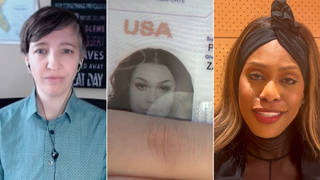
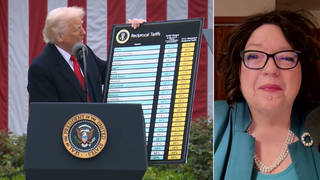
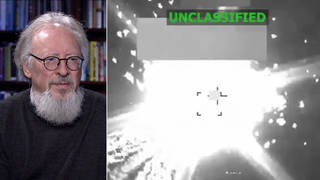
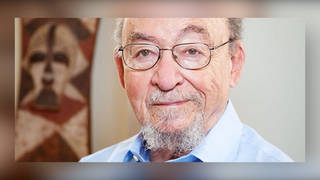





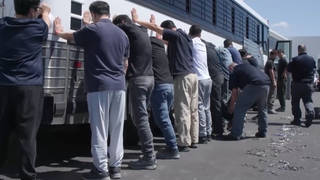
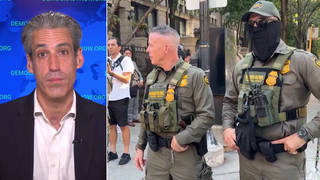
Media Options